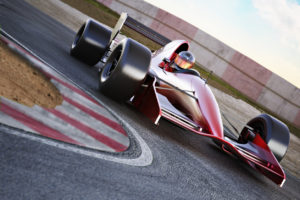This month we travel to the Crossroads of America, the Midwest state of Indiana. It is known for its farmland and renowned auto race, the Indianapolis 500, held at the Indianapolis motor speedway. In the capital, Indianapolis, theatres and galleries line Massachusetts Avenue. The city’s downtown is home to the iconic Soldiers and Sailors Monument, the Canal Walk promenade and the Indianapolis Museum of Art and its wide-ranging collections.
Various indigenous peoples inhabited Indiana for thousands of years. Indiana received its name because the state was largely possessed by native tribes even after it was granted statehood. Since then, settlement patterns in Indiana have reflected regional cultural segmentation in the Eastern United States; the state’s northernmost tier was settled primarily by people from New England and New York, Central Indiana by migrants from the Mid-Atlantic states and adjacent Ohio, and Southern Indiana by settlers from the Upland South, particularly Kentucky and Tennessee.
In Northwest Indiana, there are various sand ridges and dunes, some reaching nearly 200 feet in height. These are located along the Lake Michigan shoreline and also inland to the Kankakee Outwash Plain. Southern Indiana is characterized by valleys and rugged, hilly terrain, contrasting from much of the state. Here, bedrock is exposed at the surface and isn’t buried in glacial till further north. Because of the prevalent Indiana limestone, there are numerous caves, caverns, and quarries in the area.
Business Climate
The state’s five leading exports are motor vehicles and auto parts, pharmaceutical products, industrial machinery, optical and medical equipment, and electric machinery. Northwest Indiana has been the largest steel producing center in the U.S. since 1975 and accounted for 27% of American-made steel in 2016.
Indiana is home to the International headquarters and research facilities of pharmaceutical company Eli Lilly in Indianapolis, the state’s largest corporation. Evansville is also home to the world headquarters of Mead Johnson Nutritionals. Overall, Indiana ranks fifth among all U.S. States in total sales and shipments of pharmaceutical products and second highest in the number of biopharmaceutical related jobs.
Along with corn, soybeans are also a major cash crop. Other crops include melons, tomatoes, grapes, mint, popping corn and tobacco in the southern part of the state. Most of the original land was not prairie and had to be cleared of deciduous trees. Many parcels of woodland remain and support a furniture-making sector in the southern portion of the state.
Tax Climate
The top individual income tax rate is 3.23% and the top corporate income tax rate is 5.5%.
Apportionment: Indiana taxpayers apportion income tax using a single-factor sales weighted formula.
Indiana has adopted market-based sourcing for sales of intangibles.
Sales Tax Structure
The state sales tax rate is 7%. The combined rate is also 7%.
Indiana has an economic nexus law where if an out of state seller sells $100,000 or 200 transactions worth of merchandise into the state, sellers need to collect and remit sales tax on those transactions to the state. Gross revenue from sales of tangible personal property, electronically delivered products, and services are included in the threshold. Exempt sales and exempt services are also included in the threshold. The threshold applies to transactions in the previous or current calendar year. This law went into effect on October 1, 2018.
Marketplace facilitators that make or facilitate sales into Indiana and meet the economic nexus thresholds of $100,000 in sales or 200 or more transactions in Indiana must collect and remit sales tax on all taxable sales made through the marketplace. This requirement also applies to lodging marketplaces. This law was enforced on July 1, 2019.
The sale or use of specified digital products is taxable, if the product is transferred electronically to an end user with the right of permanent use of the specified digital product and the right of permanent use is not conditioned upon continued payment. Indiana imposes sales tax on the sales of prewritten software delivered electronically. Sales of custom computer software delivered electronically are not subject to sales and use tax. Software as a service (SaaS) is not taxable in Indiana. How products are produced, sold and delivered is critical to determining the tax status.
Many states have annual sales tax holidays, during which certain items the state wants to promote the purchase of (like school supplies emergency preparedness supplies, or energy efficient appliances) can be purchased sales tax free. Indiana, however, does not currently have any scheduled sales tax holidays.
Our team at Miles Consulting Group is always available to discuss the specifics of your situation, whether in Indiana or other U.S. States, and help you navigate the complex tax structures arising from multistate operations. Call us to help you achieve the best tax efficiencies.
Random Facts
- The first long-distance auto race in the U.S. was held on May 30, 1911 at the Indianapolis Motor Speedway.
- Explorers Lewis and Clark set out from Fort Vincennes on their exploration of the Northwest Territory.
- Marcella Gruelle of Indianapolis created the Raggedy Ann doll in 1914.
- Indiana ships over 70 million tons of cargo by water each year, which ranks 14th among all U.S. states.
- In 1862, Richard Gatling, of Indianapolis, invented the rapid-fire machine gun.
- At one time, 12 different stagecoach lines ran through Indiana on the National Road (now U.S. Interstate 40).
- Indiana is the first state to have a chapel in its state capitol. It was built in memory of former first lady Beth Bowen.
- There have been six men from Indiana who have been elected vice president: Schuyler Colfax, Thomas A. Hendricks, Charles W. Fairbanks, Thomas Marshall, Dan Quayle and Mike Pence. They have earned Indiana the nickname “Mother of Vice Presidents.”
- The Indiana Dunes region on the shore to Lake Michigan provides habitats for many unusual plants, including prickly pear cactus, lichen mosses, bearberry and more than 20 varieties of orchids. Mount Baldy, the largest of the sand dunes, is a living dune that moves away from shore a few feet a year.















